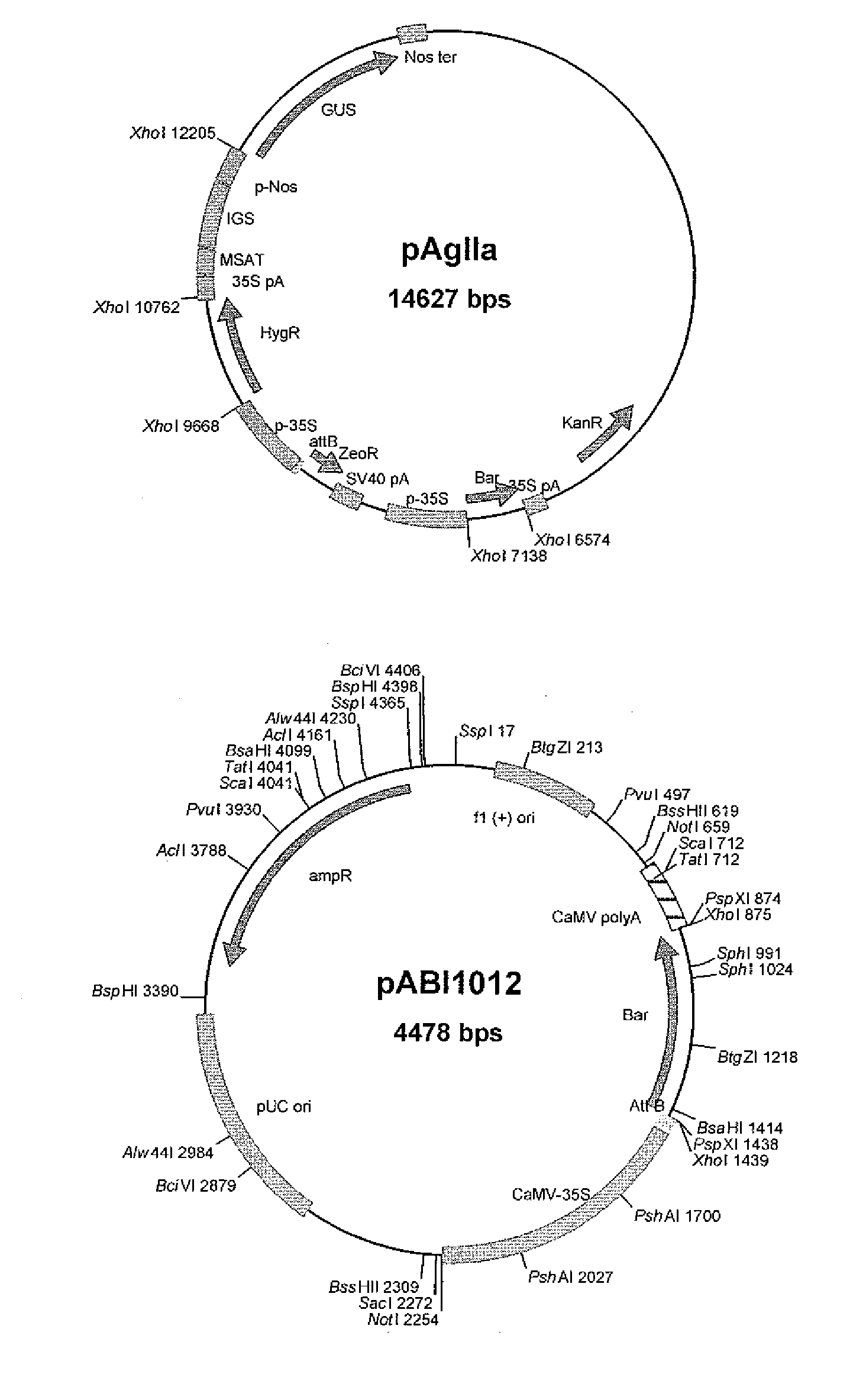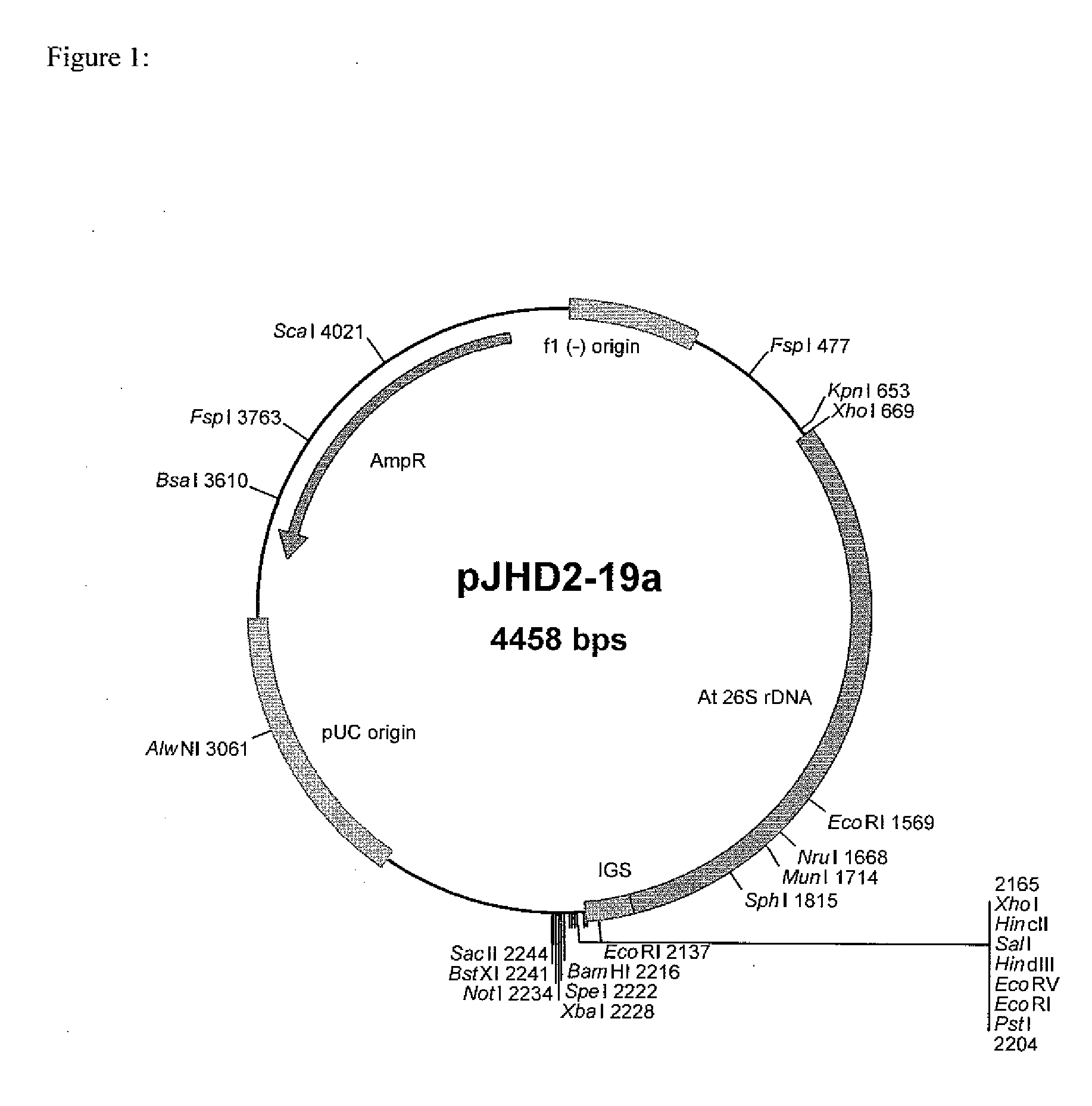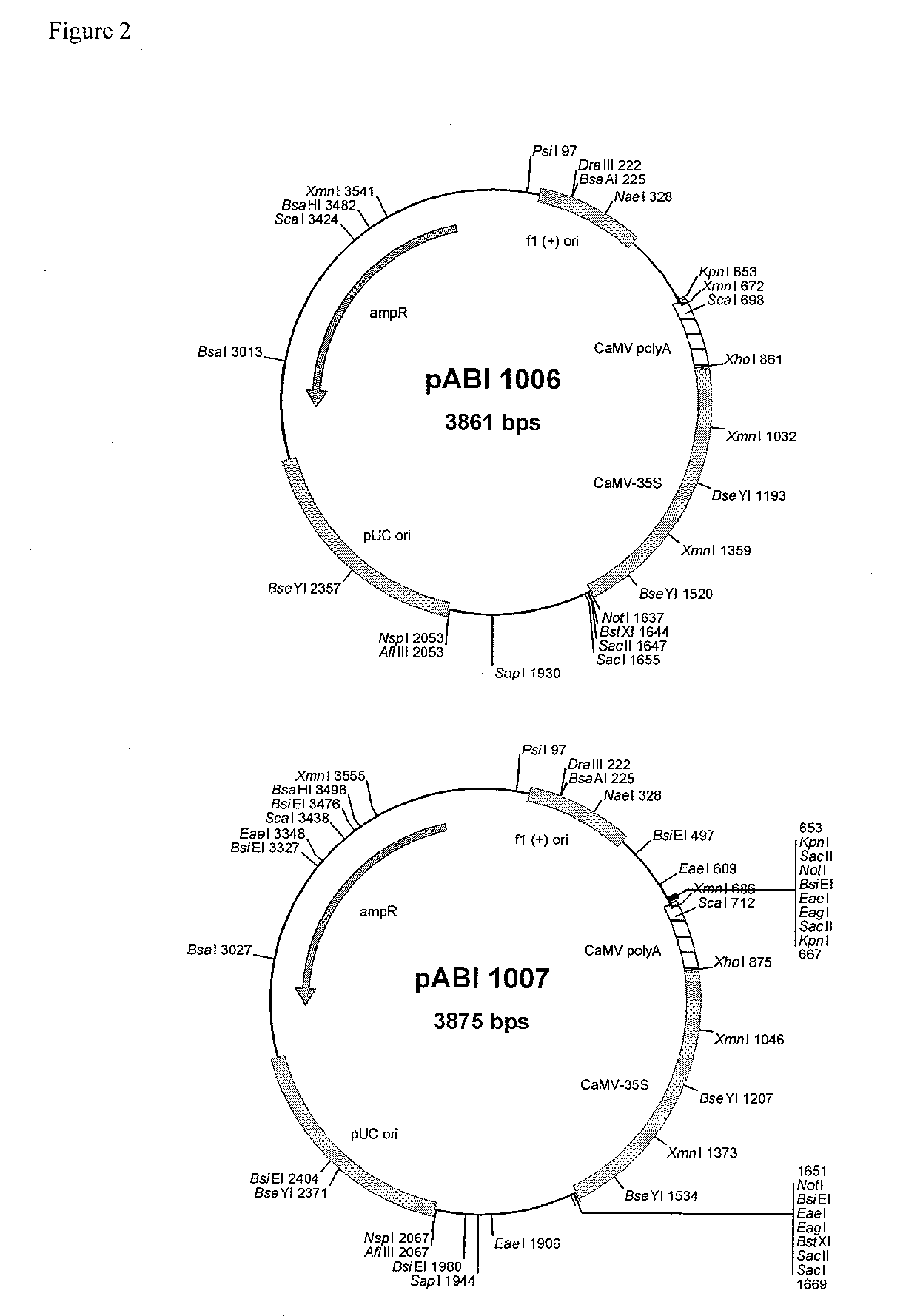Production of modified fatty acids in plants
- Summary
- Abstract
- Description
- Claims
- Application Information
AI Technical Summary
Benefits of technology
Problems solved by technology
Method used
Image
Examples
example 1
Isolation of a First Nucleic Acid
[0168]In this example an Arabidopsis 26S rDNA sequence was isolated. The plasmid pJHD2-19a, containing a portion of the Arabidopsis 26S rDNA gene (see FIG. 1) has been described previously (US Publication No: 20060143732). For use as a first nucleic acid, the plasmid was digested with XhoI and a 1.5 kb fragment containing the rDNA segment was gel purified away from plasmid sequences.
example 2
Assembly of a Second Nucleic Acid
[0169]In this example a nucleic acid construct is generated comprising three fatty acid biosynthesis genes.
[0170]Generation of High Erucic Acid (HEA) vector backbone: A 14 base oligo, 5′-CGCGGCCGCGGTAC-3′ [SEQ ID NO: 22] was self annealed to generate a double stranded NotI linker with KpnI compatible single-strand extensions at either end. This was then ligated to KpnI digested plasmid pABI1006 (FIG. 2, upper panel) to yield the recombinant plasmid pABI1007 (FIG. 2, lower panel). A double stranded oligonucleotide containing an attB site with XhoI compatible single-stranded extensions at the 5′ and 3′ ends respectively (FIG. 3, upper panel) was ligated to XhoI digested pABI1007 and recombinant plasmid pABI1009 was obtained (FIG. 3, lower panel) with the attB site inserted in the sense orientation with respect to the CaMV 35S promoter and terminator sequences. Subsequently a 564 by XhoI fragment containing the BAR gene coding sequence was excised from ...
example 3
Transformation of Brassica napus with First and Second Nucleic Acids
[0177]In this example, protoplasts were used as starting material and a composition comprising of a first and second nucleic acids were introduced into the protoplasts. The first nucleic acid comprised the rDNA fragment from Example 1, whereas the second nucleic acid comprised the Not1 fragment from Example 2. These two nucleic acids constructs were introduced into freshly isolated protoplasts. In general, to obtain Brassica protoplasts, 60-80 newly expanding leaves of plantlet cultures (2-3 per plantlet) were harvested under sterile conditions and placed in a Petri plate (see Table 1 for media and buffer formulations). Bottom leaf surfaces were gently scored. The leaves were then placed bottom side down in 100×25 mm Petri plates containing 15 to 20 ml of Enzyme B2 solution (about 20 to 30 leaves per 100×25 mm Petri plate). Petri plates were then sealed with Parafilm™ and leaves incubated overnight (15 to 20 h) at 2...
PUM
| Property | Measurement | Unit |
|---|---|---|
| volume | aaaaa | aaaaa |
| volume | aaaaa | aaaaa |
| volume | aaaaa | aaaaa |
Abstract
Description
Claims
Application Information
 Login to View More
Login to View More - R&D
- Intellectual Property
- Life Sciences
- Materials
- Tech Scout
- Unparalleled Data Quality
- Higher Quality Content
- 60% Fewer Hallucinations
Browse by: Latest US Patents, China's latest patents, Technical Efficacy Thesaurus, Application Domain, Technology Topic, Popular Technical Reports.
© 2025 PatSnap. All rights reserved.Legal|Privacy policy|Modern Slavery Act Transparency Statement|Sitemap|About US| Contact US: help@patsnap.com



